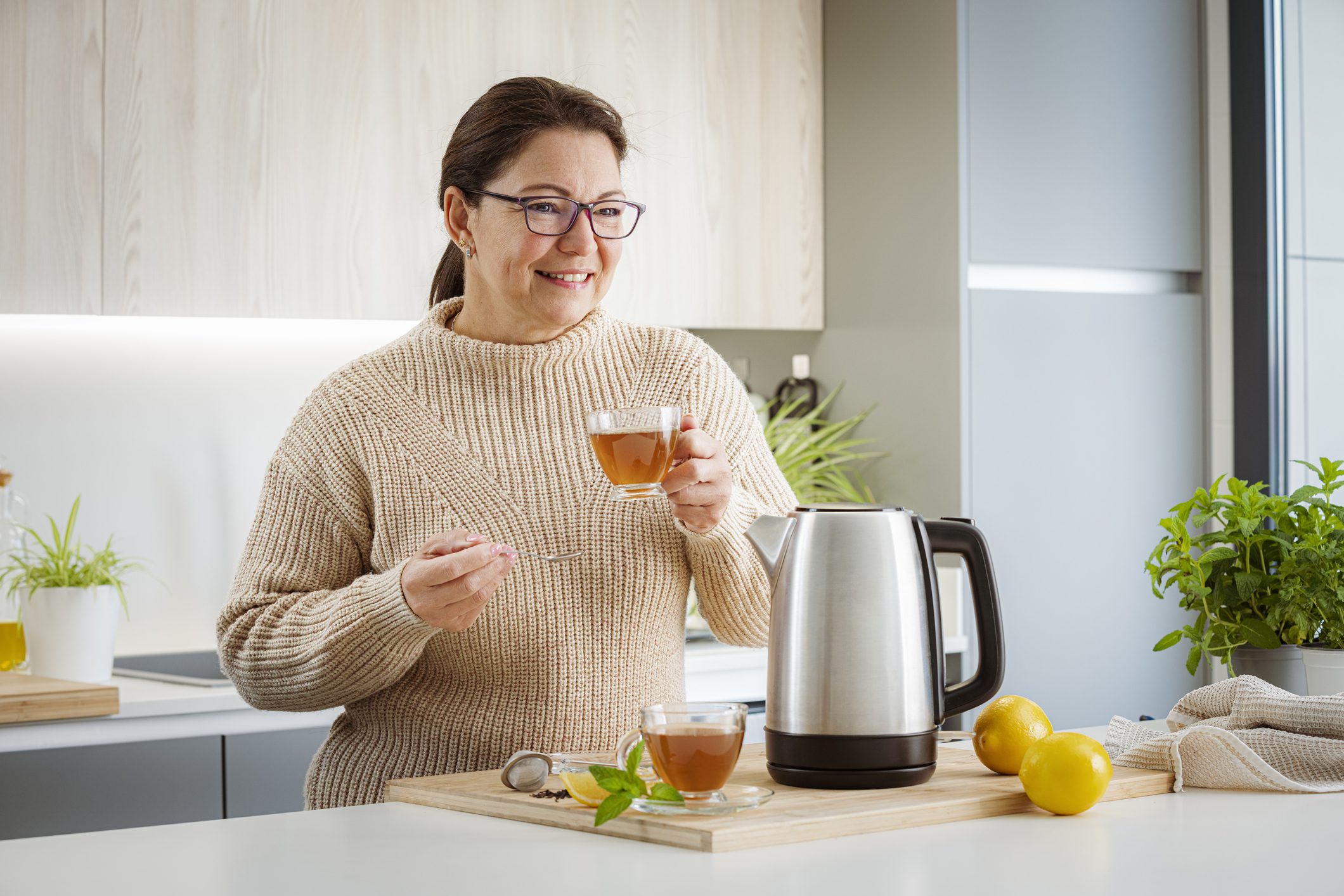Your gut houses trillions of organisms. Among them include about 1,000 different species of bacteria, as well as yeasts and fungi, including Candida.1
“This fungus is meant to harmlessly and naturally live in our bodies, and when you’re in good health, it exists symbiotically with other bacteria in the gastrointestinal tract, on the mucous membranes, and on your skin,” says Ann Boroch, CNC, about Candida in The Candida Cure.
In other words, with a healthy gut, Candida exists harmoniously with other organisms. When these trillions of organisms fall out of balance, however, a condition called dysbiosis or gut imbalances can result. Like kudzu, Candida can then overgrow and create havoc throughout your body.
Learn more about dysbiosis or gut imbalances here.
Candida overgrowth, called candidiasis, is the most common opportunistic yeast infection. While other organisms can contribute to this condition, candidiasis is usually created from overgrowth of Candida albicans or C. albicans.2
With candidiasis, Boroch says, “an otherwise harmless microbe [turns] into an aggressive and opportunistic pathogen that systemically wreaks havoc throughout your body.”
Among its damage, Candida overgrowth can puncture the gut and damage the intestinal lining. As a result, your gut lining becomes more permeable, creating a condition called leaky gut syndrome, or leaky gut. Leaky gut allows Candida overgrowth to enter your bloodstream, where it can impact other organs including the vagina, mouth, and throat.
Learn more about leaky gut in this blog.
“In some people, fungi manage to escape the GI tract and take up residence in other places,” says William Davis, MD, in Super Gut. “This explains why people with intestinal fungal overgrowth commonly also experience fungal infections of the underarms, throat, esophagus, vagina, groin, and brain.”
How Do I Know If I Have Candidiasis?
Candidiasis affecting the mouth is called thrush or oral thrush, whereas Candida overgrowth in the vagina is called a yeast infection. At its most damaging, a serious condition called invasive candidiasis can impact your blood, heart, brain, eyes, bones, and other areas.3
Numerous culprits contribute to candidiasis, including:
- Antibiotics, steroids, birth-control pills, and estrogen-replacement therapy
- Exposure to heavy metals
- Diets high in refined sugars and carbohydrates, dairy products, alcohol, and processed foods
- Chronic stress4
Gas and bloating, constipation, and other after-meal miseries can all be warning signs of candida overgrowth. But the repercussions of candidiasis go beyond the gut. Brain fog, often feeling fatigued, and sugar cravings are symptoms of yeast overgrowth. In fact, Candida feeds off sugar, making you want more.
Boroch attributes many modern problems—things like weight gain, arthritis, allergies, ear infections, and depression—to this overgrowth of yeast. Many people suffering with symptoms of Candida don’t make the connection between, say, joint pain and yeast overgrowth. They have no idea they’ve got it!
Testing is one way to measure yeast overgrowth. Unfortunately, Vincent Pedre, MD, says that no test is entirely accurate.
“Many candidiasis symptoms overlap with other common health problems, making it difficult to diagnose based on symptoms alone,” he tells mindbodygreen.
Regardless of their limitations, Pedre suggests several tests to diagnose yeast overgrowth and rule out other culprits:
- Stool testing
- Serum testing
- Candida DNA test
- Stool PCR testing
- Microbial organic acids testing
You can read more about these tests here.
If you suspect candidiasis, talk with your healthcare practitioner about these and other tests, along with dietary and lifestyle modifications for your condition. The good news is that you have the power to heal your gut and stop yeast overgrowth.
The following six strategies can support your gut and reduce the likelihood of yeast overgrowth. Don’t try them all at once, though. As you work with your healthcare practitioner to alleviate yeast overgrowth, implement one or two fixes at a time.
Candida Fix 1: Go Low-Sugar Impact
Sugar cravings are challenging enough without gut conditions like candidiasis making them worse. The vicious cycle of Candida means you crave sugar and often feel tired, which only makes you want more sugar.
In one study, 100 women ate a diet heavy in sugar, dairy products, and artificial sweeteners. Researchers determined that eating those foods elevated levels of glucose and other sugars that feed Candida albicans. When the women eliminated sugar, dairy, and artificial sweeteners, they reduced the frequency and severity of their Candida.5
Eliminating those problem foods balanced their blood-sugar levels, and you can do the same.
“Anyone who tests positive for Candida or yeast overgrowth… must be much stricter about avoiding added sugar,” says Pedre in Happy Gut.
Going off sugar cold-turkey can be a serious challenge. In the Sugar Impact Diet, I’ll teach you to slowly taper from high sugar-impact to medium sugar-impact foods. The key is to transition over time, so you don't experience symptoms of withdrawal.
Learn more about the Sugar Impact Diet here.
Candida Fix #2: Address Food Intolerance
Highly reactive foods like soy and gluten can contribute to leaky gut. So can Candida overgrowth, which exacerbates food Intolerance by keeping gut inflammation stoked. This creates a vicious cycle where Candida continues to overgrow.
In The Virgin Diet, you eliminate seven of the most highly reactive foods that create inflammation and wreak havoc on your gut. Then, you’ll challenge four of these foods to see which works for you.
To specifically address Candida overgrowth, you’ll also want to eliminate these foods:
- Mold-containing foods, including pistachios, cashews, and peanuts (depending on how they are grown, they may be high-risk for being contaminated by a mold called aflatoxin)
- Mushrooms, except for medicinal ones like reishi, chaga, lion’s mane, shiitake, and cordyceps
- Vinegars, except for unfiltered apple cider vinegar, which helps fight Candida and restores gut balance
Letting go of the foods that are hurting you and replacing them with healing, nutrient-rich foods can heal your gut and reduce your risk of problems like Candida overgrowth. Learn more about The Virgin Diet here.
Candida Fix #3: Give Your Gut Some Loving
The Virgin Diet is a great place to start healing your gut, but you’ll also want to include the right nutrients to support the healing process. These are my favorite nutrients to fight Candida and heal your gut.
Probiotics
Probiotic supplements help support the balance and diversity of those trillions of organisms that inhabit your gut. When you have diversity and balance, your gut can keep organisms like Candida under control.
Probiotic supplements can help support healthy bacteria and reduce the number of pathogenic bacteria. Specific bacterial strains, such as Lactobacillus, can be especially helpful here.
“Lactobacillus destroys pathogens like Candida by spraying or injecting them with hydrogen peroxide, the stuff that people use to bleach their hair,” says Dr. Michael Mosley in The Clever Gut Diet. He adds that low amounts of Lactobacillus “can give Candida a chance to take over your gut.”
Prebiotics
“Prebiotics are nondigestible fibers found in foods such as Jerusalem artichokes and raw scallions,” says Pedre in Happy Gut. “These compounds promote the growth of beneficial flora.”
In other words, prebiotics are the food that probiotics feed on.
One of my favorite ways to get prebiotics is by adding half a barely ripe banana to your loaded smoothie. Barely ripe bananas provide a type of prebiotic fiber called resistant starch. Cooked properly, potatoes are also a good source of resistant starch, as I discuss in this blog.
Break your fast every morning with a fast, filling loaded smoothie. Need some yummy ideas? I’ve got over 60 recipes in this guide. It’s FREE… and guaranteed to be a game-changer for fat loss and overall health. Claim yours here.
Fiber
When it comes to supporting your gut, fiber is queen. For one, fiber increases the short-chain fatty acids (SCFAs) that fuel your colon. Research shows that these SCFAs keep Candida species in check.6
I recommend getting 50 grams of fiber daily. Most people aren’t getting anywhere near that amount. If you’re on the low end, increase your fiber intake by five grams at a time, and drink plenty of water to compensate. This blog provides 15 of my favorite high-fiber foods to help get you started.
Coconut Oil
Caprylic acid, a fatty acid in coconut oil, has anti-fungal properties that make it effective for fighting Candida overgrowth. Research shows caprylic acid, along with other fatty acids in coconut such as immune-boosting lauric acid, “have potential as substances supporting anti-Candida treatment.”7
Consuming a few tablespoons of extra-virgin coconut oil is a great way to get caprylic acid, although you can also find it in supplement form.
I debunk some tired myths about coconut oil here.
Omega-3 Fatty Acids
Omega-3 fatty acids help fight gut inflammation that can create widespread havoc.
“By fixing the gut, we accomplish much more than just a reduction in gut-associated inflammation; we fix inflammation everywhere in the body,” says Pedre in Happy Gut.
Omega Plus contains a highly potent, non-GMO fish oil, derived from fish oils in their natural triglyceride (TG) form (the same way they naturally occur in fish). Every softgel provides an impressive 662 mg of EPA and 250 mg of DHA. That’s almost one gram of omega-3 fatty acids… in just one softgel! Most supplements demand multiple softgels to get anywhere near that amount.
Vitamin D
Studies show that among its many benefits, vitamin D supplementation increases the overall diversity of the gut microbiota, increasing the good guys and downsizing the bad ones.8
Vitamin D Plus is our new, improved vitamin D product. We combine therapeutic doses of vitamin D3 along with bioavailable vitamin K1 (Phytonadione) and vitamin K2 (Menaquinone-7), as well as geranylgeraniol (GG) to complement those benefits, all in one easy-to-take softgel.* You can only get it here.
Anti-Fungal Herbs
Research shows that herbs including ginger and oil of oregano can provide anti-fungal benefits to fight candida.9
Buy the oil of oregano supplement I use and recommend here.
Digestive Enzymes
Stress and age can deplete the digestive enzymes that break down food or make them ineffective. As a result, insufficient stomach acid and pancreatic enzymes can lead to undigested food, which Candida can feed on.10
People who often feel stress or are over 30 (and that includes most of us) are often susceptible to deficiencies and can benefit from a digestive enzyme supplement.
Protein First Enzymes contain digestive enzymes and select botanicals to help promote efficient digestion of proteins found in gluten, lactose, and casein — so you can break down proteins, fats, and carbohydrates like a pro!*. Order yours here.
Candida Fix #4: Manage Stress
When your stress hormone cortisol stays elevated when it shouldn’t be, your gut takes the hit. Among its havoc, research shows that chronic stress contributes to dysbiosis.11 Left unchecked, these gut imbalances can lead to other gut issues including leaky gut and an increased risk of yeast overgrowth.
“High cortisol alters tight junctions between cells such that small harmful substances may pass through the barrier,” says Sara Gottfried, MD, in Younger. “Additionally, high cortisol reduces gut motility, blocks digestion, blunts blood flow to the gut, and lessens mucus production, an important immune function.”
Learn my most effective ways to manage stress in this episode of Ask the Health Expert.
Take Ten Stress Support is a uniquely formulated product that provides gamma-aminobutyric acid (GABA), a key neurotransmitter for a normal, calm stress response. We’ve also added other calming nutrients including glycine, niacinamide, pantothenic acid, and vitamin B6.* You can only get Take Ten Stress Support here.
Candida Fix #5: Get Great Sleep
Researchers connect issues like interrupted sleep and not getting sufficient sleep with dysbiosis or gut imbalances. (They also found that probiotic supplementation can improve sleep quality.)12
As you heal your gut, you’ll want to get eight or nine hours of deep sleep every single night.
I’ve compiled my best strategies for consistently great sleep in my Best Rest Sleep Cheat Sheet. Claim yours FREE here.
Candida Fix #6: Address Toxic Overload
We’re bombarded with toxins, which lurk in the food we eat, water we drink, air we breathe, and many products that we use every day. Studies show that these environmental chemicals can adversely alter your gut, contributing to the dysbiosis that sets the stage for Candida overgrowth.13
While you can’t eliminate these toxins (they’re everywhere), you can be proactive about avoiding exposure and supporting your body’s detoxification process.
One way to do that is to eat a rainbow of organic colorful veggies—particularly deep green, leafy ones—to flush out heavy metals and other toxins. Veggies are loaded with nutrients to support detoxification as well as fiber, which binds and eliminates excess toxins. Learn more ways to detoxify effectively in this blog.
Take this quiz to learn your toxicity levels and learn ways to minimize your body’s toxic burden.
Final Thoughts
Researchers note that with infections like Candida, prevention is the most effective treatment.2
Eating a low sugar-impact diet, addressing food intolerance, getting the right gut-supporting nutrients, and managing stress and sleep can go a long way to keep your gut thriving.
If you suspect Candida, talk with your healthcare practitioner about appropriate tests and other treatments for your condition. Working with a functional-medicine doctor can be especially helpful as you fight this infection and work to heal your gut.
No more compromising on great sleep! Our Sleep Support Bundle combines 2 effective supplements that help you get great sleep: Sleep Candy™ (which includes melatonin, L-theanine + other sleep support nutrients) and Magnesium Body Calm. Combined, both supplements help you fall and stay asleep… every single night.
The views in this blog by JJ Virgin should never be used as a substitute for professional medical advice. Please work with a healthcare practitioner concerning any medical problem or concern. The information here is not intended to diagnose, treat, or prevent any disease or condition. Statements contained here have not been evaluated by the Food and Drug Administration.
*These statements have not been evaluated by the Food and Drug Administration. This product is not intended to diagnose, treat, cure, or prevent any disease.
References:
- Pedre, Vincent. Happy Gut: The Cleansing Program to Help You Lose Weight, Gain Energy, and Eliminate Pain. HarperCollins. Kindle Edition.
- Martins N, Ferreira IC, Barros L, Silva S, Henriques M. Candidiasis: predisposing factors, prevention, diagnosis and alternative treatment. Mycopathologia. 2014 Jun;177(5-6):223-40. doi: 10.1007/s11046-014-9749-1. Epub 2014 May 1. PMID: 24789109.
- https://www.cdc.gov/fungal/diseases/candidiasis/invasive/
- Boroch, Ann (2018-02-05T22:58:59.000). The Candida Cure . HarperCollins. Kindle Edition.
- Horowitz BJ, Edelstein SW, Lippman L. Sugar chromatography studies in recurrent Candida vulvovaginitis. J Reprod Med. 1984 Jul;29(7):441-3. PMID: 6481700.
- Kunyeit L, K A AA, Rao RP. Application of Probiotic Yeasts on Candida Species Associated Infection. J Fungi (Basel). 2020 Sep 25;6(4):189. doi: 10.3390/jof6040189. PMID: 32992993; PMCID: PMC7711718.
- Takahashi M, Inoue S, Hayama K, Ninomiya K, Abe S. [Inhibition of Candida mycelia growth by a medium chain fatty acids, capric acid in vitro and its therapeutic efficacy in murine oral candidiasis]. Med Mycol J. 2012;53(4):255-61. Japanese. doi: 10.3314/mmj.53.255. PMID: 23257726.
- Singh P, Rawat A, Alwakeel M, Sharif E, Al Khodor S. The potential role of vitamin D supplementation as a gut microbiota modifier in healthy individuals. Sci Rep. 2020 Dec 10;10(1):21641. doi: 10.1038/s41598-020-77806-4. PMID: 33303854; PMCID: PMC7729960.
- Pozzatti P, Scheid LA, Spader TB, Atayde ML, Santurio JM, Alves SH. In vitro activity of essential oils extracted from plants used as spices against fluconazole-resistant and fluconazole-susceptible Candida spp. Can J Microbiol. 2008 Nov;54(11):950-6. doi: 10.1139/w08-097. PMID: 18997851.
- https://smartnutrition.co.uk/digestion/digestive-health/candida-albicans/
- Gao F, Guo R, Ma Q, Li Y, Wang W, Fan Y, Ju Y, Zhao B, Gao Y, Qian L, Yang Z, He X, Jin X, Liu Y, Peng Y, Chen C, Chen Y, Gao C, Zhu F, Ma X. Stressful events induce long-term gut microbiota dysbiosis and associated post-traumatic stress symptoms in healthcare workers fighting against COVID-19. J Affect Disord. 2022 Apr 15;303:187-195. doi: 10.1016/j.jad.2022.02.024. Epub 2022 Feb 12. PMID: 35157946; PMCID: PMC8837476.
- Matenchuk BA, Mandhane PJ, Kozyrskyj AL. Sleep, circadian rhythm, and gut microbiota. Sleep Med Rev. 2020 Oct;53:101340. doi: 10.1016/j.smrv.2020.101340. Epub 2020 May 13. PMID: 32668369.
- Chi L, Tu P, Ru H, Lu K. Studies of xenobiotic-induced gut microbiota dysbiosis: from correlation to mechanisms. Gut Microbes. 2021 Jan-Dec;13(1):1921912. doi: 10.1080/19490976.2021.1921912. PMID: 34313531; PMCID: PMC8346244.






